Exploring Warsaw’s Ghetto in Just 2 Hours: An Authentic Journey into Hidden Histories
When we think about Warsaw during World War II, the images of destruction and resistance are impossible to ignore. This 2-hour tour offers a focused, insightful look into daily life inside the Warsaw Ghetto, providing a chance to see remains of ghetto walls, streets, and key sites that tell a story of suffering, resilience, and history. For $74 per person, you’ll walk through sites like the last preserved street, the remains of the ghetto wall, the only surviving synagogue, and places connected to the heroic uprising, including Mila 18. The tour is led by guides praised for their knowledge and engaging storytelling, making history come alive in a way that’s both respectful and compelling.
Two things we particularly love about this tour are the authenticity of the sites visited—such as the remnants of the street and the wall—and the stories behind the Underground Archive, which was so important that it’s now part of UNESCO’s Memory of the World. These details turn a simple walk into a meaningful experience. The only possible downside? The tour is quite short, so if you’re eager for a deep dive, you might find yourself wishing for more time at each site. Still, it’s perfect for those wanting a powerful overview with genuine sites and stories that resonate long after.
This tour suits history buffs, those interested in Holocaust history, or travelers who want a meaningful, guided experience without spending hours on it. It’s especially fitting if you prefer walking tours that focus on authentic locations rather than large museums, and if you appreciate guides who can explain complex stories clearly and with warmth.
This experience made our article of Warsaw’s 13 Top 2-Hour Tours (With Prices).
Key Points
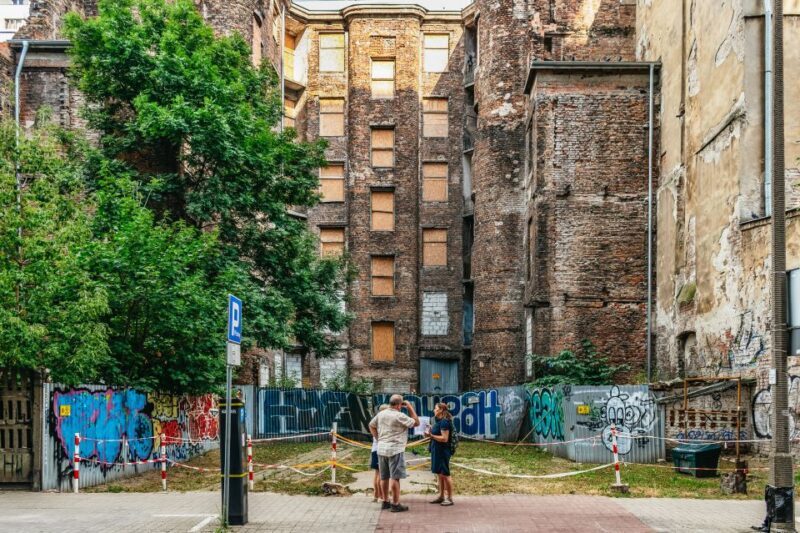
- Authentic Sites: Visit remains of the last streets of the ghetto and the original walls.
- Deep Stories: Learn about daily life, resistance, and the uprising from knowledgeable guides.
- Historical Significance: Discover the importance of the Underground Archive and its UNESCO recognition.
- Concise Format: Perfect for a quick yet meaningful introduction to Warsaw’s wartime history.
- Walking & Public Transport: Combines foot exploration with local transit, making it practical.
- Memorable Locations: See Mila 18, Umschlagplatz, and the only surviving synagogue.
A Journey Through Warsaw’s Ghetto: What You Can Expect
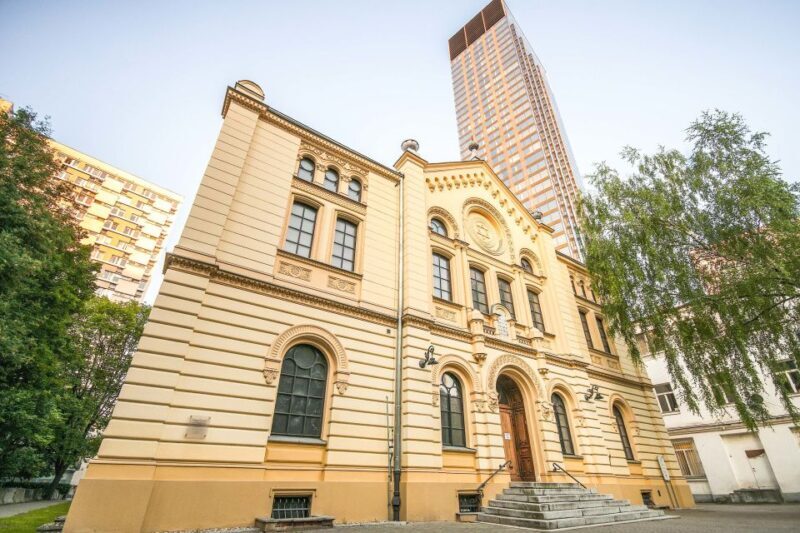
This guided walk covers the most crucial sites and stories from the Warsaw Ghetto, which was once the largest in Europe. Starting with the remains of the ghetto walls and the last street that has been preserved, you’ll get a tangible sense of the confined space where more than 460,000 Jews were crammed in just four square kilometers. It’s a stark reminder of how tightly packed and desperate life inside the ghetto was.
Your guide, who has been highly praised for their clarity and warmth, will lead you through streets that once teemed with life—before everything changed. You’ll learn how residents coped with hunger, disease, and the constant threat of deportation, highlighted by stories from the Underground Archive. This collection of documents, hidden away during the war and now protected as part of UNESCO, offers a rare glimpse into the everyday efforts of those who recorded their lives in secret.
Next, you’ll visit the site of Mila 18, known historically as the bunker where the uprising began in 1943. Standing near the former Footbridge over Chodna Street, you’ll get a sense of the stealth and courage involved in resisting Nazi efforts to wipe out the ghetto. The tour also includes stops at the Umschlagplatz, the square where Jews were deported to Treblinka, and the Monument to the Ghetto Heroes, a powerful tribute to those who fought and died.
Throughout the tour, your guide will weave in stories of resistance, destruction, and indifference, helping you understand how the ghetto’s history shaped the wider narrative of WWII and Polish-Jewish relations. The experience is immersive, with real sites that remain tangible links to a tragic, yet resilient chapter of history.
While in Warsaw, here are other experiences we've covered
What Makes This Tour Stand Out
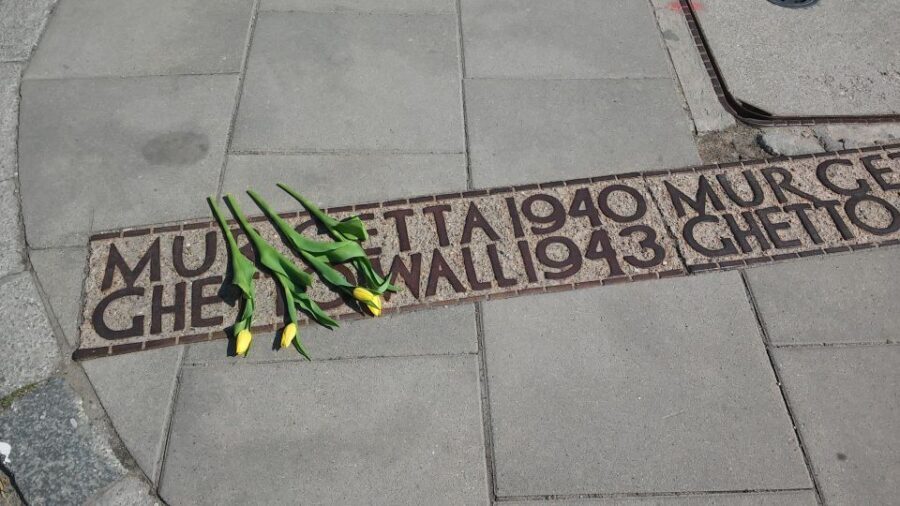
One of the most praised aspects is the expert knowledge of guides. Nicole J. described her guide as “warm and welcoming,” with “exceptional knowledge” that made the complex history accessible. We loved how guides not only explained the factual background but also focused on personal stories—from what daily life was like to the motivations behind the uprising.
The visual impact of visiting the remains of streets and walls cannot be overstated. As Grace put it, the tour was “super informative and truly aided in understanding,” thanks to stops at original sites that are often overlooked in larger, less focused tours. The sense of authenticity is palpable, offering a rare opportunity for travelers to see where history happened rather than just learning about it in a museum.
The value for money is also notable. For $74, you’re getting a focused, guided experience that’s both informative and emotionally impactful. The inclusion of headsets for groups up to 20 ensures clear communication even in busy outdoor settings, which enhances the overall experience.
A key consideration is that this tour is not suitable for children under 12, mainly because of its serious content and the walking involved. Also, it’s a two-hour tour, so travellers with limited time can use it as a powerful overview but might want to follow up with more detailed visits, such as to the Museum of the History of Polish Jews.
In-Depth Breakdown of the Itinerary
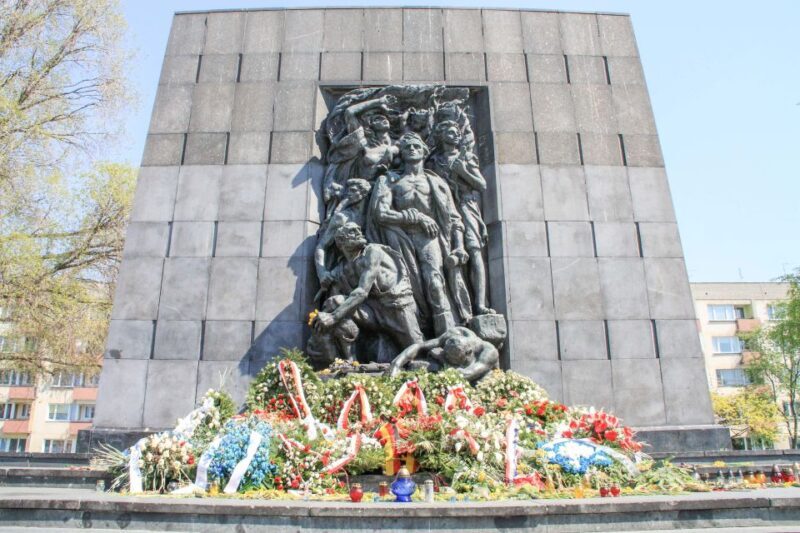
Starting Point and Introduction
The tour begins at a convenient meeting point, where the guide will hold a sign with “PolinTours.” From there, it’s a short walk to the first site: the remains of the last street of the ghetto. The guide will describe how this street once bustled with daily activity and what caused it to become the last standing part of the original ghetto.
More Great Tours NearbyGhetto Walls and Streets
Next, you’ll explore sections of the original ghetto walls—a haunting reminder of the confinement. The walls are not just ruins; they are symbols of suppression and resilience. The guide will explain the architecture and purpose of these barriers, and how they affected life inside.
- Warsaw’s No 1 cooking class-Polish dumplings with liqueur tasting
- Private Tour: Warsaw City Sightseeing by Retro Fiat
- #1 Pub Crawl Warsaw with Premium Open Bar
- Warsaw Behind the Scenes – small group tour with hotel pickup
- Warsaw Food Tasting Tour with Delicious Poland
- Chopin Concerts everyday at the Fryderyk Concert Hall
Site of Mila 18 and Related Locations
The focus then shifts to Mila 18, the site of the bunker where the Uprising started. Standing at this historically charged location, you’ll learn about the bravery and desperation of those inside. The tour continues to the Footbridge over Chodna Street, which no longer exists but played a key role in hiding resistance activities.
Umschlagplatz and the Monument
Your route will include a visit to the Umschlagplatz, where thousands of Jews were deported. Seeing this spot provides context for the horrific deportation process and the immense courage of those who resisted. The Monument to the Ghetto Heroes offers a visual anchor, commemorating those who fought back.
The Underground Archive
Perhaps most compelling is the Underground Archive, which documented life in the ghetto through hidden documents and personal stories. As Sabine appreciated, her guide kept the tour “spanning and engaging,” explaining how the archive survived and why it remains crucial today.
End of Tour and Optional Museum Visit
The tour concludes back at the starting point, but it’s encouraged to visit the Museum of the History of Polish Jews afterward. The museum’s core exhibition complements the tour, and audio guides are recommended to deepen your understanding.
Practical Details & Tips
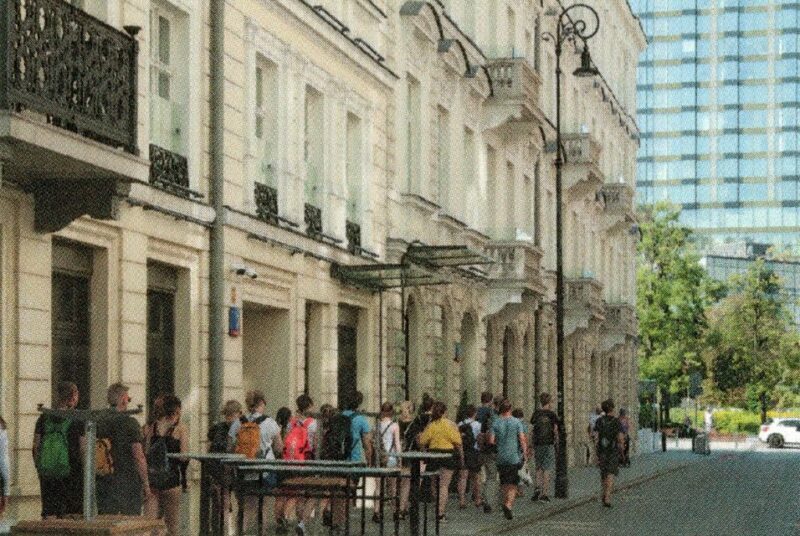
- Duration: 2 hours, with a possibility to extend at the museum afterward.
- Price: $74 per person, a fair rate considering the quality and authenticity of the sites visited.
- Group Size: Max 20 for clear audio and personal attention.
- Transport: Includes some public transit, so be prepared for walking and riding.
- Meeting Point: Sign with “PolinTours.”
- End Location: Same as the start, with recommendations to explore the Museum afterward.
- Language: Guided in English and German; check availability.
- What to Bring: Comfortable shoes, water, and an open mind. No large bags or pets allowed.
Who Should Take This Tour?
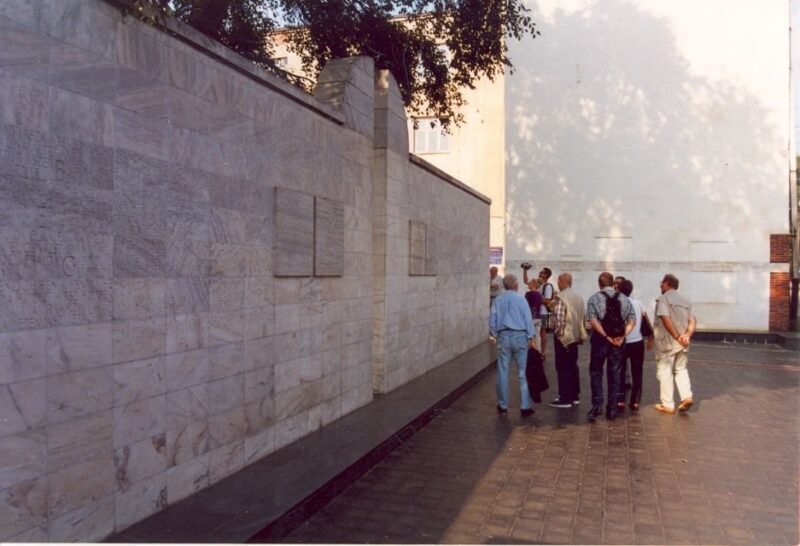
If you’re interested in authentic, site-specific history and want to learn directly from guides praised for their knowledge and storytelling, this tour is ideal. It’s especially well-suited for those with a respectful curiosity about WWII, the Holocaust, or Polish history. People who appreciate walking tours that focus on original locations without the crowds of large museums will find this experience particularly meaningful.
While the tour is quite comprehensive for its length, history aficionados might want to visit additional sites afterward, such as the Jewish Museum. Families with children under 12 should note the tour’s seriousness and length, though older kids with interest in history could find it an eye-opening experience.
Frequently Asked Questions
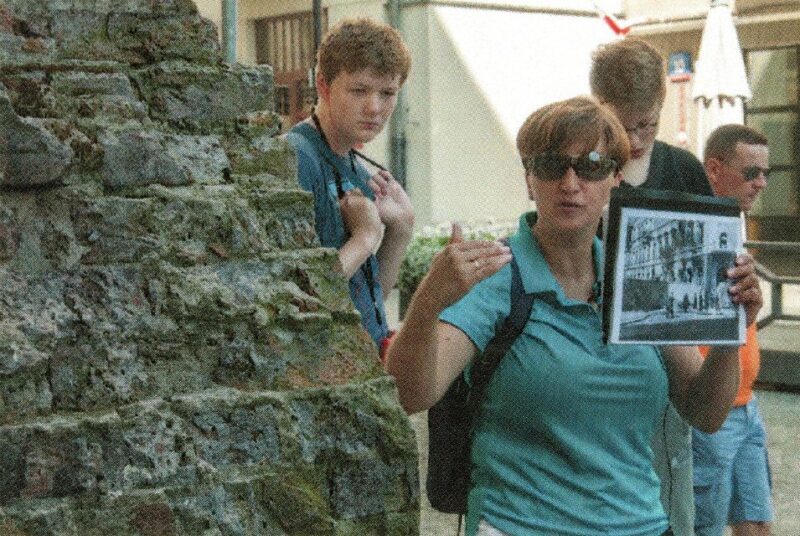
How long is the tour?
It lasts approximately 2 hours, making it a manageable yet rundown.
Is the tour suitable for children?
It’s not recommended for children under 12 due to the serious content and walking involved.
Does the tour include entrance fees?
No, it does not include entrance fees to sites or museums, so plan accordingly if you wish to visit further.
Is public transport involved?
Yes, the tour includes some public transit as part of the exploration, so be prepared for walking and riding.
Are headsets provided?
Yes, headsets are supplied for groups up to 20 to ensure clear communication.
Can I cancel the tour?
Yes, you can cancel up to 24 hours in advance for a full refund.
What languages are guides available in?
The tour is conducted in English and German, subject to availability.
Is the tour wheelchair accessible?
The description doesn’t specify wheelchair access; check with the provider if needed.
Can I extend my visit to the Jewish Museum?
Absolutely. The tour usually ends at the Jewish Museum, where you might want to explore further with an audio guide.
What should I bring?
Comfortable shoes, water, and a respectful attitude. Large bags or pets are not permitted.
In sum, this Warsaw Ghetto tour offers a rare glimpse into a profound chapter of history through well-chosen sites, compelling stories, and expert guides. It’s a memorable experience that balances authenticity with accessibility, perfect for those who want to understand the human side of wartime Warsaw without spending hours or straying from the main landmarks. Prepare to be moved and informed—this is history that stays with you.
You can check availability for your dates here:More 2-Hour Experiences in Warsaw
- Warsaw: 2-Hour Private Beer Tasting Tour with Guide
- 2h Rental of Motorboat for 10 in Warsaw no License Needed
- Private Transfer from Warsaw to Vienna with 2h of Sightseeing
- 2 hour: Palace of Culture & Science Guided Tour in English
- Warsaw: 2-Hour Praga Walking Tour
- Warsaw: 2-Hour Guided Old Town Walking Tour
More Tours in Warsaw
- Warsaw: Private Polish Beer Tasting Tour with a Guide
- Warsaw: Palace of Culture and Science Guided Tour
- Fryderyk Chopin and Zelazowa Wola – Half Day Tour from Warsaw by private car
- Warsaw: Old Town Highlights Private Walking Tour
- Warsaw Off The Beaten Path Self-Drive Tour
- Warsaw Private Bike Tour with lunch: Royal,Old Town,Lazienki
More Tour Reviews in Warsaw
- Warsaw: Private Polish Beer Tasting Tour with a Guide
- Warsaw: Palace of Culture and Science Guided Tour
- Fryderyk Chopin and Zelazowa Wola – Half Day Tour from Warsaw by private car
- Warsaw: Old Town Highlights Private Walking Tour
- Warsaw Off The Beaten Path Self-Drive Tour
- Warsaw: Traditional Galar Cruise on The Vistula River
More Warsaw experiences we've covered
- 7 Fantastic Workshops & Classes In Warsaw
- Warsaw’s 7 Top Wine Tours (With Prices)
- Which Warsaw Walking Tours To Choose? We Rank The 16 Best
- The 9 Best Tours In Warsaw
- Top 16 Private Driver Services In Warsaw
- 5 Most Highly Rated Photography Experiences In Warsaw
- Warsaw’s 3 Top National Park Tours
- The 8 Most Popular Lunch Experiences In Warsaw
- Which Warsaw Historical Tours To Choose? We Rank The 16 Best
- Which Warsaw Full-Day Tours To Choose? We Rank The 15 Best
- The Top 12 Warsaw Food Tours
- 16 Best Drinking Tours In Warsaw (With Prices)
